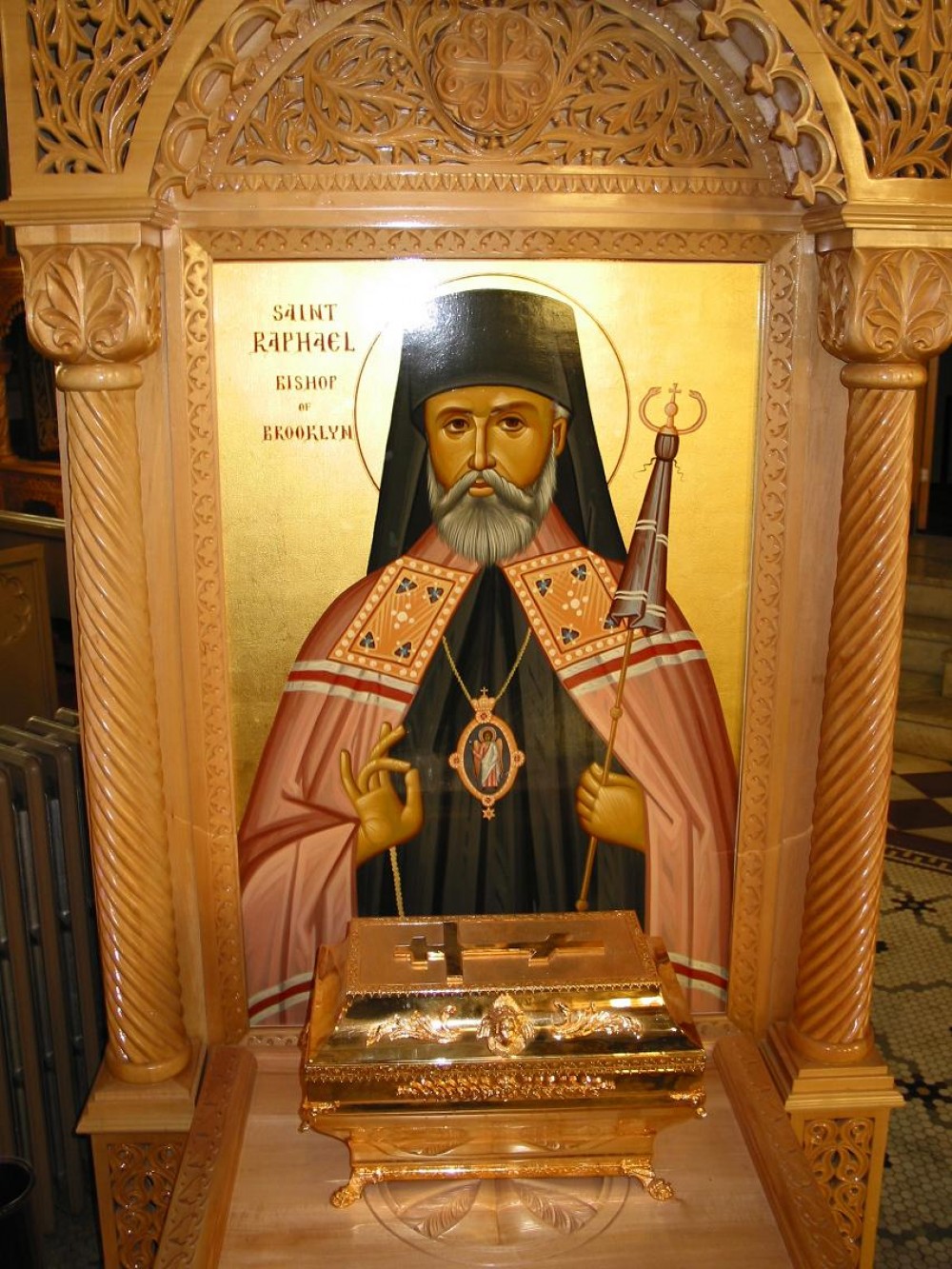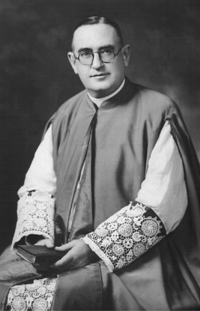 There was a fine story in the New York Times the other day about Brooklyn, the Catholic Church and sainthood. Here's the opening:
There was a fine story in the New York Times the other day about Brooklyn, the Catholic Church and sainthood. Here's the opening:
Brooklyn, the borough of churches and trees, Walt Whitman and Woody Allen, Barbra Streisand and Mike Tyson, has never lacked for people of distinction – except perhaps in one category.
Nobody from Brooklyn has ever been made a saint.
But at a special church service ... Bishop Nicholas A. DiMarzio of the Roman Catholic Diocese of Brooklyn opened what is known as a "canonical inquiry" into the cause of sainthood for a Brooklyn priest, Msgr. Bernard J. Quinn.
Monsignor Quinn, who died in 1940 at age 52, championed racial equality at a time when discrimination against blacks was ubiquitous in America, even inside the Catholic Church. In the Depression-era heyday of the anti-Semitic, pro-Fascist radio broadcasts of the Rev. Charles E. Coughlin, Monsignor Quinn encountered sharp resistance from some fellow priests when he proposed ministering to Brooklyn's growing population of blacks, many of them fleeing the Jim Crow South or migrating from the poor Caribbean countries.
It's quite a story. A few GetReligion readers, including one who said it felt strange to praise the Times, sent me the URL and asked for a positive post about this feature.
Glad to do so. However, I must first mention one very basic problem, one linked to that sentence that states the news hook: "Nobody from Brooklyn has ever been made a saint."
That sentence should have read: "Nobody from Brooklyn has ever been proclaimed a saint by the Catholic Church."
You see, because of its sheer size and importance in American and the West, in general, many journalists have a tendency to see religion news through the lens of Rome (and to a lesser extent, Canterbury). When people in newsrooms think about saints, to the degree that they ever do so, they tend to think about Catholic saints.
The problem is that this does not take into account the second-largest body of Christian believers on the global scene – the churches of Eastern Orthodoxy. Thus, the Times team has overlooked the existence of St. Raphael of Brooklyn, who is a very important figure for the Orthodox here in North America, especially for those who are yearn for the creation of one, unified, pan-Orthodox expression of the faith in this land.
Back in 2000, at the time that this missionary bishop was proclaimed a saint, I wrote the following in a column for Scripps Howard:
Raphael Hawaweeny was born in 1840, while Christians were being slaughtered in the streets of Damascus. His family briefly fled to Lebanon after the martyrdom of their parish priest, St. Joseph of Damascus. ... The young Raphael became a monk, but had to leave home to receive an education equal to his abilities. First, he studied with the Greeks at the School of Theology in Halki and he later did graduate studies in Kiev, Russia. Raphael spent nearly a decade in Russia, leading the Arab parish in Moscow. But it was his fierce advocacy of the rights of Arab Christians back home in the ancient church of Antioch that led to clashes with some bishops and, at one point, to his suspension from ministry as a priest.
Then he received an 1895 invitation to lead an Arab mission in yet another strange land – Brooklyn. By this point, Raphael knew Latin, classical Greek and Old Church Slavonic, while speaking Arabic, Turkish, Greek, Russian, French and English.
The missionary traveled from Montreal to Mexico City and founded 30 parishes. As his fame grew, Raphael had numerous opportunities to return home. The Antiochian synod offered him positions as a bishop in Beirut, Tripoli, Tyre, Sidon and elsewhere. But he remained with his flock, becoming a bishop in a 1904 rite in Brooklyn that made him the first Orthodox bishop consecrated in North America. He died in 1915.
 So, it is simply inaccurate to say that Brooklyn doesn't have a saint to call its own. It is accurate to say that, in the future, it may have its first saint that has received that honor from the Catholic Church.
So, it is simply inaccurate to say that Brooklyn doesn't have a saint to call its own. It is accurate to say that, in the future, it may have its first saint that has received that honor from the Catholic Church.
This error would be easy to correct. I must also stress that, by raising this point, I honestly don't want to diminish the importance of this story by the Times or the cause of those seeking canonization for Monsignor Quinn. In particular, the story does a fine job of noting the rich heritage of Catholicism in New York City. Thus, we read:
The process of canonization can take a long time. The inquiry on behalf of another New Yorker, Cardinal Terence J. Cooke, has been going on since 1984. Pierre Toussaint, the 19th-century Haitian abolitionist, former slave and devout Catholic – who, like Cooke, has been championed by the Archdiocese of New York – has been in line since 1943.
The archdiocese, which includes the Bronx, Manhattan, Staten Island and several upstate counties, can lay claim to a few saints: Mother Frances Xavier Cabrini, Elizabeth Ann Seton, the Rev. Isaac Jogues and several of his fellow martyred missionaries. It has taken up the causes of another dozen potential saints, including Dorothy Day and Archbishop Fulton J. Sheen.
Brooklyn has some connection to at least two other candidates: Bishop Francis X. Ford, a Maryknoll missionary who was born in Brooklyn and died in Chinese custody in 1952; and the Rev. Felix Varela, an early-19th-century human rights advocate born in Cuba who worked in Brooklyn when it was still part of the New York Archdiocese.
But the inquiry on behalf of Monsignor Quinn is the first the Brooklyn diocese, which encompasses that borough and Queens, has started since its creation in 1853, according to the diocese's spokesman, Msgr. Kieran E. Harrington.
By all means, read it all. This was, indeed, a man whose ministry of justice and equality was – well – quite miraculous.
Still, a small correction would be helpful, as a nod to St. Raphael of, yes, Brooklyn.
